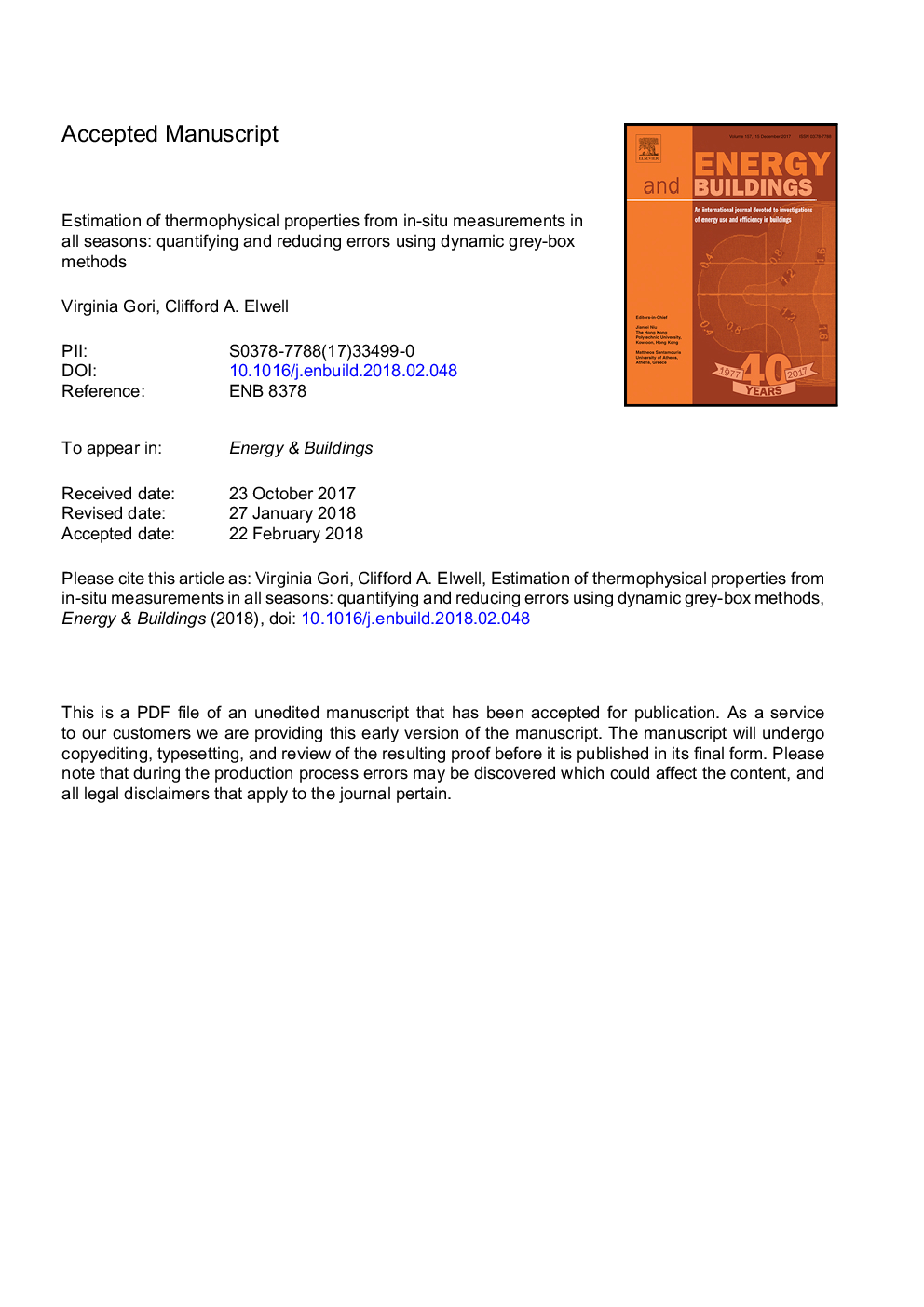| Article ID | Journal | Published Year | Pages | File Type |
|---|---|---|---|---|
| 6728383 | Energy and Buildings | 2018 | 29 Pages |
Abstract
Thermophysical properties and their associated errors were investigated using two case studies monitored long term. The analysis showed that the dynamic method (and in particular a three thermal resistance and two thermal mass model) reduced the systematic error compared to the static method, even for periods of low internal-to-external average temperature difference. It was also shown that the use of a uniform error as suggested in the ISO 9869-1:2014 Standard would generally be misrepresentative. The study highlighted that dynamic methods for the analysis of in-situ measurements may provide robust characterisation of the thermophysical behaviour of buildings and extend their application beyond the winter season in temperate climates (e.g., for quality assurance and informed decision making purposes) in support of closing the performance gap.
Keywords
Related Topics
Physical Sciences and Engineering
Energy
Renewable Energy, Sustainability and the Environment
Authors
Virginia Gori, Clifford A. Elwell,
